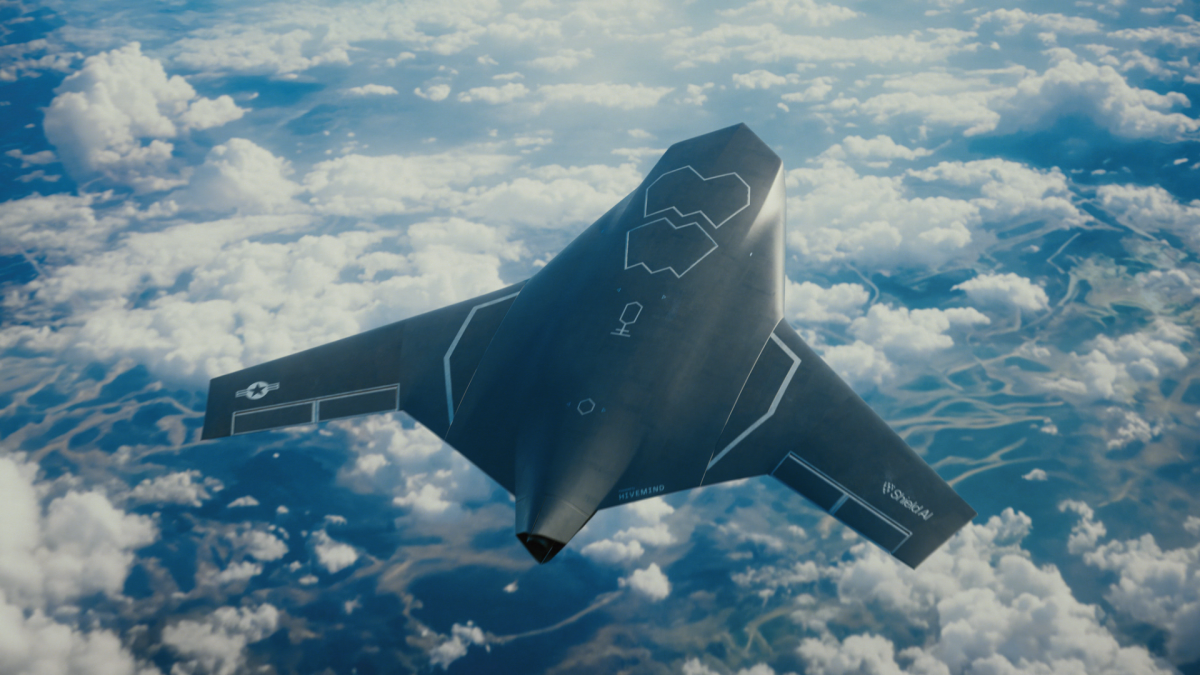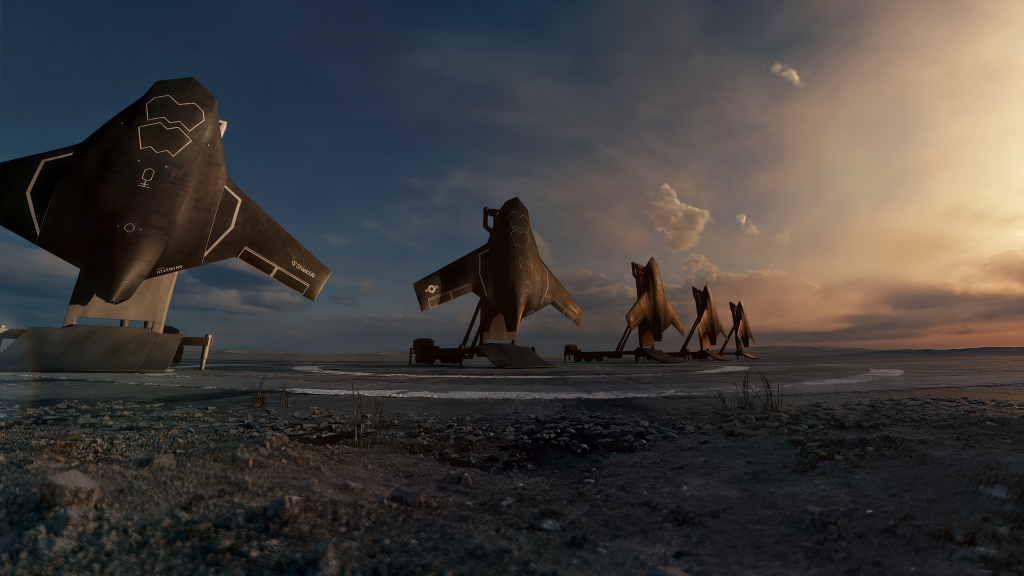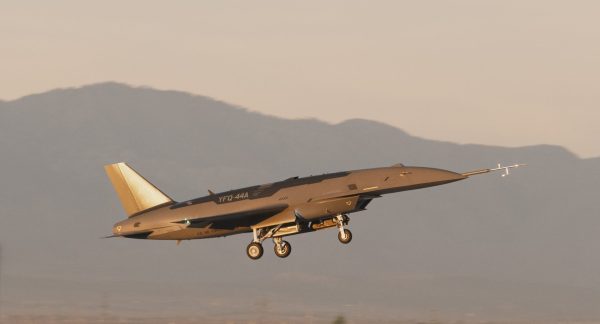Shield AI reveals VTOL autonomous fighter jet dubbed X-BAT

Defense tech startup Shield AI has entered the market for loyal wingman drones with its new vertical-takeoff-and-landing (VTOL) uncrewed fighter jet called X-BAT.
Unveiled on Tuesday during an event in Washington, X-BAT is a Group 5 unmanned aerial vehicle that the company is pitching as an option for one of the many robo-jet programs under development across the Pentagon. The aircraft’s body — which features a low-signature airframe design and large jet engine — is designed to be paired with Shield AI’s “Hivemind” software to enable collaborative, AI-enabled flight.
“X-BAT has the size, weight and power needed to carry sensors to be able to standalone unlike any other autonomous aircraft on the market today,” Armor Harris, senior vice president of aircraft at Shield AI, said Tuesday during the unveiling event, adding that it has the ability to “organically close its own kill chains without reliance on third-party assets.”
The company has been developing X-BAT for around 18 months, having already completed a number of ground tests to validate its airframe, engine and ability to vertically take off and land, Harris said. Moving forward, Shield AI plans to conduct its first VTOL flights in fall 2026 and then “full mission capability flights” in 2028.
While X-BAT has similar features to other fixed-wing, fighter jet-like drones on the market — including stealth, extended range and multi-role capabilities — the aircraft is unique in its ability to be launched and recovered vertically, according to Shield AI President Brandon Tseng. Rendered videos shown during Tuesday’s event depicted the UAV taking off from upright trailers deployed on aircraft carriers at sea and remote islands with limited infrastructure.
“It’s built to enable combatant commanders with geographically distributed, long-range fires and solve the problem that fifth- and sixth-generation capabilities are too costly,” Tseng said. “I just want to emphasize that airpower without runways is truly the holy grail of deterrence. Airpower that is everywhere means it creates an infinite number of dilemmas for the adversary to deal with.”

The drone will also fly using an “[F-16 Fighting Falcon]-class engine” that features an afterburner and thrust vectoring nozzle, Harris said. He told reporters the company is working with Pratt & Whitney and General Electric — which manufacture the F-16’s F100 and F110 engines, respectively — on the X-BAT’s engine.
“There’s actually a large number of old engines in the fleet that we can bring back, lightly refurb and then stick into this platform,” Harris said. “That’s a way to circumvent a lot of the new engine build times.”
Shield AI plans to announce other partners that will help build the X-BAT’s airframe and engine in the coming weeks.
X-BAT will be offered to customers as either a standalone aircraft or a loyal wingman drone that flies alongside manned aircraft. Additionally, the company intends to provide its AI-enabled pilot known as Hivemind as part of the system, but the UAV is expected to be able to support software developed by other vendors, as well.
All of the military services have either begun or stated interest in developing robotic wingman drones, commonly referred to as Collaborative Combat Aircraft (CCA). The concept broadly seeks to field large unmanned aerial vehicles that can fly alongside the military’s manned aircraft and conduct a range of missions, including offensive strike and intelligence gathering.
The Air Force is furthest along with its program, as it plans to award a final production decision for its first CCA increment in fiscal 2026. While airframe designs are being built and tested by General Atomics and Anduril, Shield AI is one of two vendors along with RTX that are providing the drone’s mission autonomy, according to a report from Aviation Week.
The Navy and Marine Corps have been following the Air Force’s program closely while developing their own service-specific requirements in the last few years, and the Army last week announced it had begun early work to field its own CCA variant.
Despite featuring an exquisite engine and design, Harris projected that X-BAT’s cost will be similar to other CCA drones currently offered.
“Fundamentally, we believe that multi-role capability is critically important,” he said. “You look at the F-16, there’s 4,000 of them that have been built because it hit the right balance of capability and price point. So we think that we’ve got it about right where X-BAT is.”






